How To Break In Snowboard Boots: The Best Tips And Tricks

Going on an exciting snowboarding adventure is a total blast, and the key to a great journey starts with properly breaking in your snowboard boots.
As an avid snowboarder and skier, Sam and I understand the importance of having boots that are not only comfortable but also fit just right.
Whether you’re new to the slopes or a seasoned rider, making sure your snowboard boots are well-worn and comfy is crucial for a fantastic time on the mountain.
Throughout this guide, we’ll share practical tips based on our experiences breaking in both ski and snowboard boots.
From customizable liners to picking the perfect socks, we’ll dive into the details to ensure your boots not only fit but also boost your overall snowboarding performance.
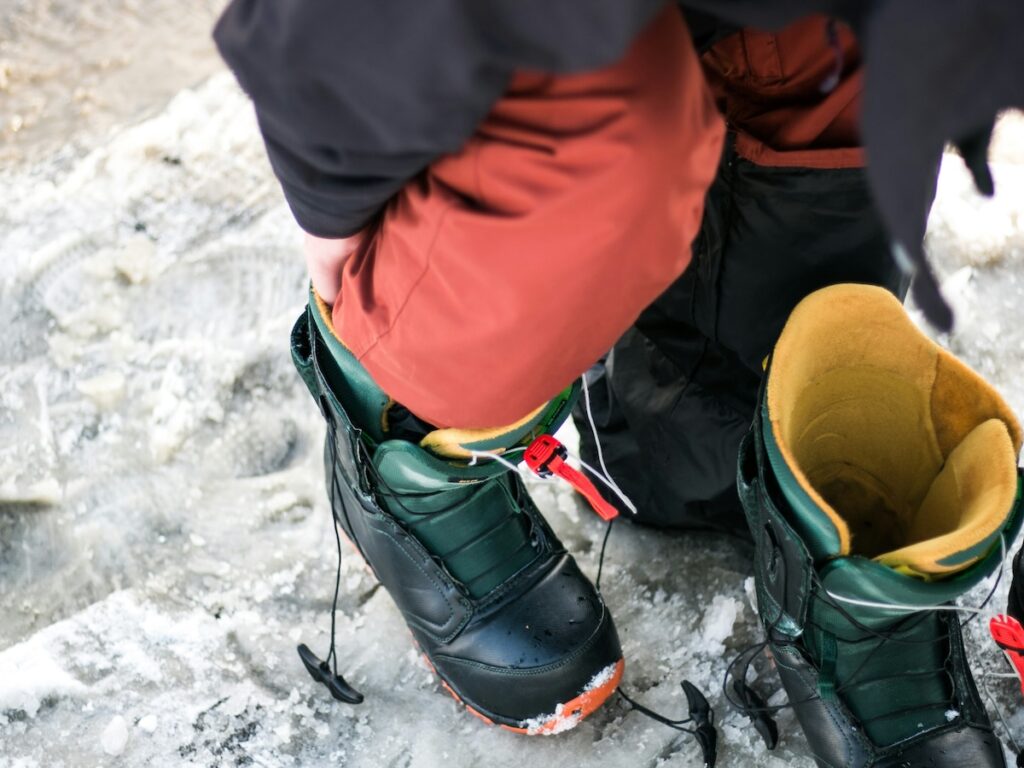
Before diving in, let’s go over how should snowboard boots feel?
Your snowboard boots need to snugly wrap around your foot without causing discomfort or tingling.
Your toes should gently touch the end of the boots without being cramped or forced to bend.
When you lean forward into the boots, there should be sufficient space for you to wiggle your toes a bit while ensuring your heel remains firmly against the back.
It’s important to have a fit without any gaps in various areas of the boot, including the toe cap, the top of your foot, the shin, and the heel.
If you’re like me, you’ll want enough room in your new boots to be able to wear thick snowboard socks without your feet feeling constricted.
If you prefer a pair of thin socks then your boots can be a bit more snug. You’ll also need to make sure that your boots have enough room for you to wear your base layers like leggings.
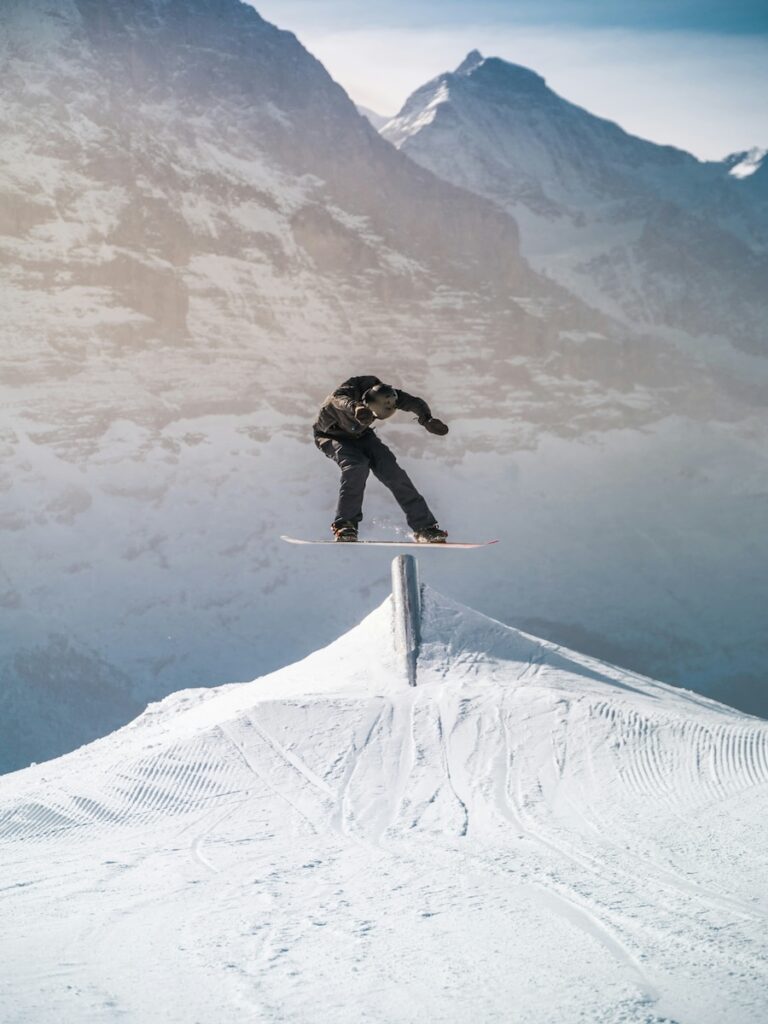
How To Break In Snowboard Boots
Continue reading below as I describe methods for how to break in snowboard boots.
Consider Moldable Liners
Moldable liners are a fantastic feature in some snowboard boots that take customization to the next level.
Unlike traditional liners, which may have a standard shape, moldable liners are designed to adapt to the specific contours of your feet.
These liners are typically made from heat-moldable materials, often foam or a combination of materials that can be altered with heat.
The process involves heating the liners, either through specialized equipment or sometimes just with the natural warmth generated by your feet during use.
Once heated, the liners become pliable, allowing them to mold to the unique shape of your feet.
The beauty of moldable liners lies in their ability to create a personalized fit. As they conform to the individual curves and arches of your feet, you’re left with boots that feel like they were tailor-made for you.
This not only enhances comfort but also minimizes pressure points and reduces the break-in period.
Many snowboarders appreciate the adaptability of moldable liners, especially those who have experienced discomfort or fit issues with standard liners.
So, when considering breaking in your snowboard boots, opting for ones with moldable liners might just be the key to achieving that perfect, personalized fit.
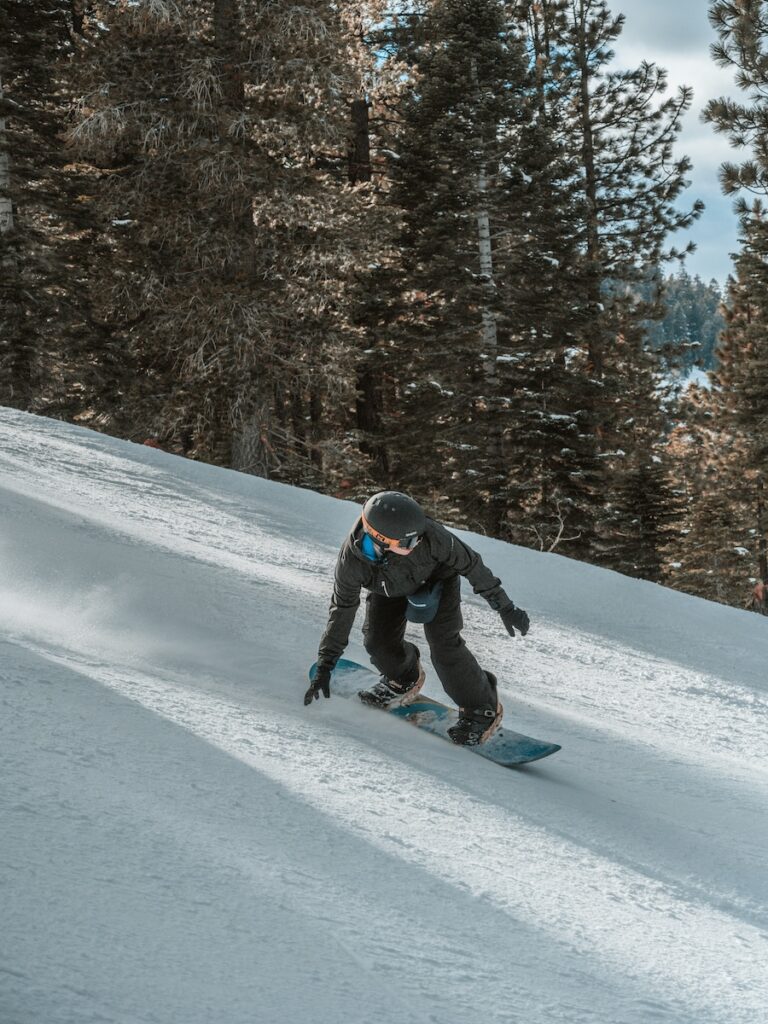
Wear The Right Socks
Choosing the right socks is a big deal when you’re breaking in your snowboard boots.
Look for socks that keep your feet dry, let them breathe, and give just the right amount of padding.
Sam and I can tell you, good socks make a world of difference. It’s important to find socks that aren’t too thick or too thin for that perfect fit.
This might mean trying out a few pairs, but it’s totally worth it to make sure your boots feel just right.
When it comes to skiing and snowboarding socks, our top choices are Darn Tough and Smartwool.
These brands are famous for crafting excellent-quality socks, and what we especially appreciate is their use of merino wool.
Not only does this material absorb sweat effectively, but it also keeps unpleasant odors at bay.
After trying out numerous sock options for our winter adventures, we can confidently say that Darn Tough and Smartwool outshine the rest.
Wear Your Boots Frequently
Breaking in your snowboard boots happens bit by bit, so be patient. Wear them regularly before your big snowboarding day.
The more you wear them, the better they’ll adjust to your feet, guaranteeing a great fit when you’re riding down the slopes.
Some folks say to break in your snowboard boots by wearing them around the house, but personally, I’ve found the best way is to hit the slopes and really ride in them.
Just keep in mind that you might need to take it easy for a few days and not go straight to the back bowls.
Start on easier ones, tweak the boots to your liking, and truly break them in while you get used to how they feel.
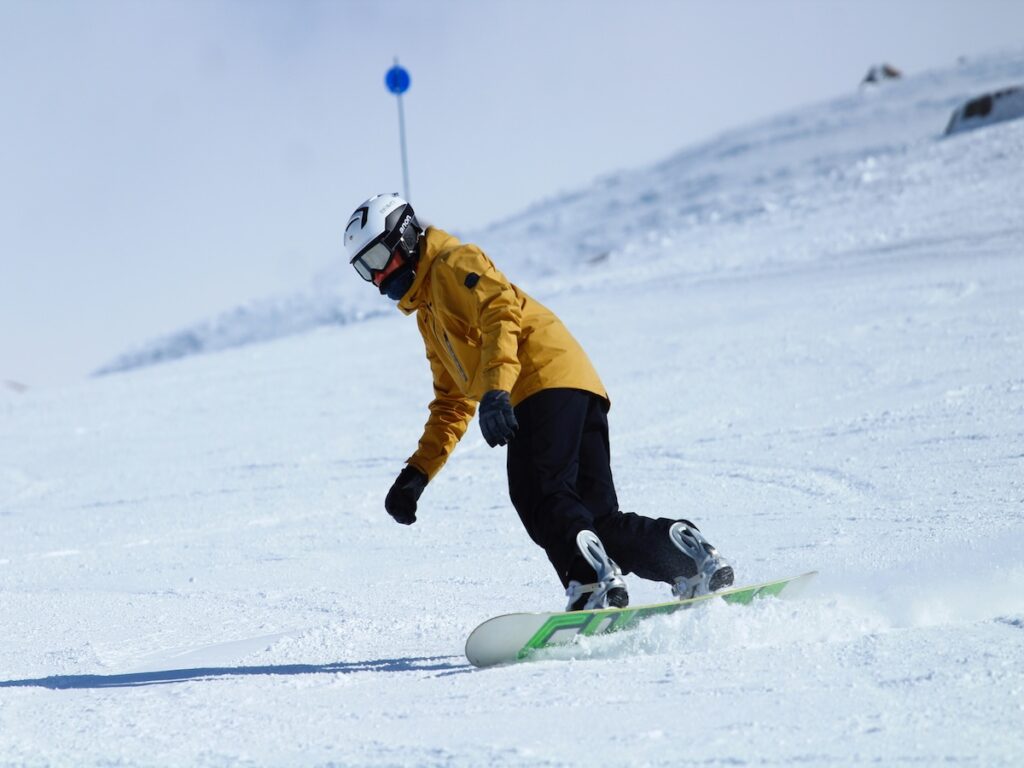
Think About Using Custom Insoles
Custom insoles for snowboarding boots are like a secret weapon for making your boots feel great.
They’re made to fit your feet perfectly, so they give personalized support and make sure your weight is spread out evenly, preventing any sore spots.
By filling in the gaps between your foot and the boot, these insoles stop your foot from moving around too much, so you feel secure while snowboarding. They also add extra cushioning, making the break-in process more comfortable.
These insoles improve how stable and responsive you are on the slopes, and they even help reduce tiredness in your feet.
Custom insoles are a great option if you have more sensitive feet or need some more arch support.
Sam has tried a few different custom insoles before and he always raves about how they make your feet more comfortable and less sore.
Adjust Your Lacing System
The lacing system on snowboard boots can have an impact on the break-in process, influencing factors like comfort, fit, and overall performance.
There are a handful of different lacing systems to choose from when purchasing new snowboarding boots. Two of the most common lacing systems include traditional and quick-pull.
Traditional laces offer a high level of customization, allowing you to adjust the tightness of each section individually.
During the break-in period, the gradual wear and adjustment of traditional laces enable you to fine-tune the fit according to your comfort preferences.
However, the process may take a bit longer compared to systems with quick adjustment mechanisms.
Quick-pull lacing systems, with their rapid adjustment capabilities, can expedite the break-in process.
The ability to quickly and easily tighten or loosen the laces allows for on-the-fly adjustments to address any discomfort or pressure points.
This can be an advantage during the initial stages of breaking in when you’re figuring out the optimal fit.
Ultimately, the impact of the lacing system on the break-in process varies based on personal preferences and the rider’s ability to fine-tune the fit.
Whichever lacing system you choose, consistent wear and gradual adjustments are key during the break-in period to ensure your snowboard boots become comfortably molded to your feet.
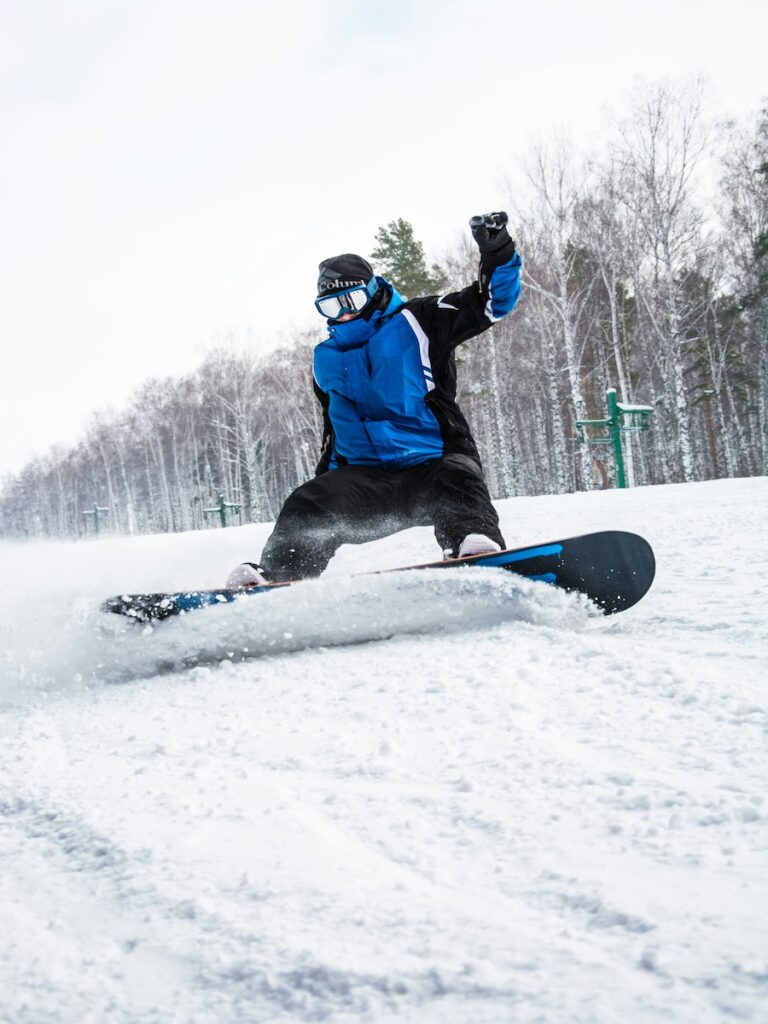
Tips For Breaking In Snowboard Boots
Keep reading below as I outlined some tips that will help you break in your boots the best way possible.
Get Fitted For Boots In Person
Before buying a new pair of boots, consider getting fitted in person from a professional.
Speaking from personal experience, I know that a lot of boots fit differently. It’s nice being able to talk to someone in person about your personal preference and it prevents you from buying oversized boots or boots that are too small.
It makes a huge difference being able to talk to someone face-to-face about your concerns because they’ll understand and lead you to which pair of new snowboard boots you should purchase based on how you want them to fit, your riding style, which brands you are interested in, and other considerations.
After all, the last thing you want to do is spend a few hundred dollars on tight boots or boots that have too much room.
Don’t Do Heat Molding Yourself
I always recommend having a professional do work on your boots and board.
Considering you’re investing a few hundred dollars in each component of your snowboarding gear and equipment, you wouldn’t want to take a chance on ruining them and causing permanent damage.
I recommend heading to your local ski shop or visiting REI and talking to a professional about heat mold-able liners and how they can help meet your needs.
Sam and I frequently visit REI to have our boards and skis and other equipment adjusted and they always do a great job making sure our equipment is ready for days of riding.
Avoid Using A Shoe Stretcher
I personally do not recommend using a shoe stretcher for your boots. If you find that your snowboard boots are uncomfortable or too tight, it’s generally recommended to break them in naturally by wearing them during regular snowboarding sessions.
If necessary, consult with a professional boot fitter who can provide personalized solutions, such as heat molding or other adjustments tailored to the unique characteristics of snowboard boots.
Using a shoe stretcher may offer limited benefits and comes with the risk of negatively impacting the performance and durability of your snowboard boots.
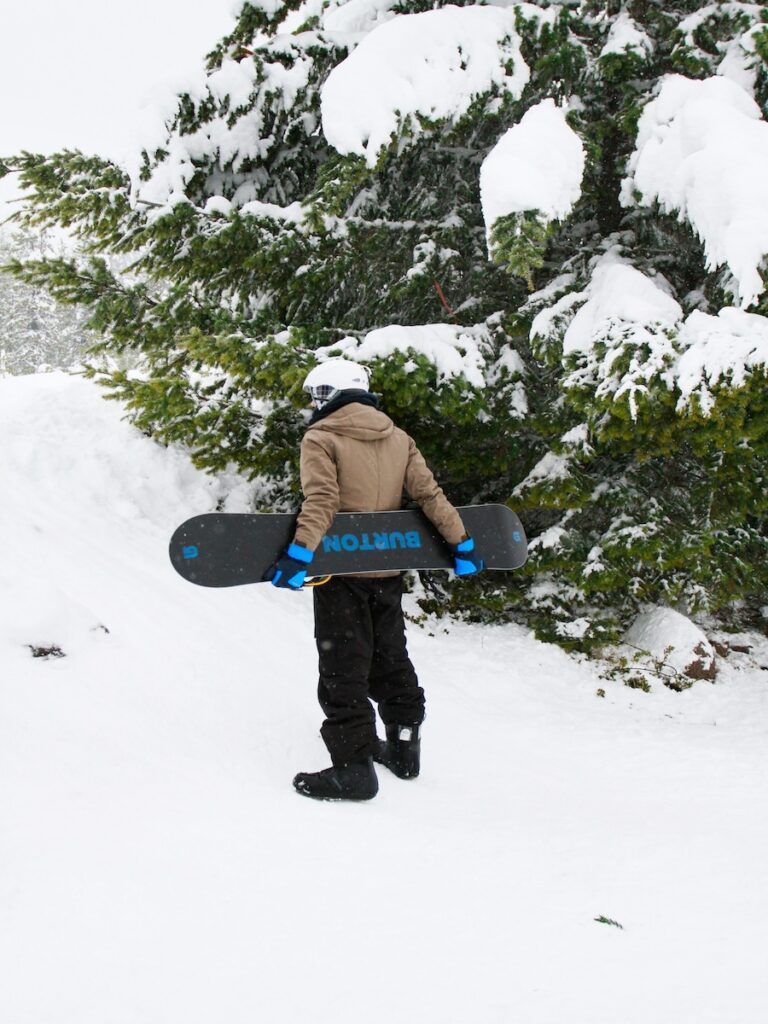
Remember The Break-In Process Takes A Little While
Breaking in a new pair of snowboard boots is a process that requires a bit of patience and understanding.
Initially, the boots may not provide the perfect fit, and it’s crucial not to get frustrated.
Instead, consider it part of the journey. To facilitate the molding process, wear the boots frequently during your regular snowboarding sessions.
However, it’s equally important to listen to your body. If you start experiencing discomfort or pressure points, it’s perfectly okay to take a break and allow your feet some rest.
Pushing through excessive discomfort can lead to more serious issues, and it’s essential to strike a balance between wearing them in and giving your feet the time they need to adapt.
This breaking-in period is not a race, and taking it slow ensures that your snowboard boots gradually conform to your feet, resulting in a more customized and comfortable fit over time.
So, embrace the process, be kind to your feet, and enjoy the gradual improvement in comfort as your boots become your perfect snowboarding companions.
Consider Your Riding Style
If you are an expert snowboarder, you might like stiffer boots for jumps, moguls, and going fast.
But if you’re a beginner, looser boots can be better because you’re taking it easy on the slopes and don’t need them to be super tight.
The Most Important Thing To Remember Is Comfortability
In my experience, I’d lean towards having my boots a tad loose rather than opting for a stiffer fit.
This choice allows me to wear thicker socks when hitting the slopes, especially during cold weather or when snow is falling and thicker socks keep my toes warm and serve as a cozy base layer.
However, personal preferences vary, and if you’re not a fan of thick socks, you might lean towards boots that are a bit tighter or stiffer to accommodate thinner socks. It all comes down to what makes you feel most comfortable and happy on the mountain.
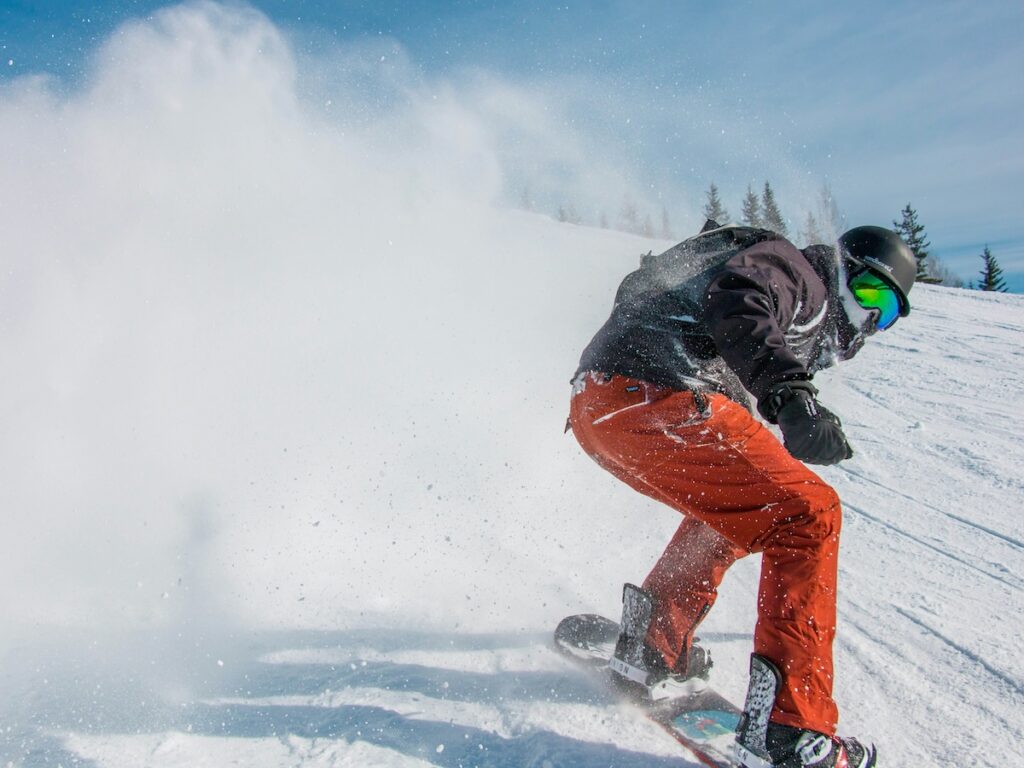
FAQs About How To Break In Snowboard Boots
Below I have answered a few frequently asked questions for breaking in snowboard boots.
How do you break in snowboard boots fast?
If you want to break in your snowboard boots fast, try a mix of tricks. Begin by wearing them at home for short stretches to find where they might pinch. If your boots can be heat-molded, give that a shot. You can also speed things up by wearing extra socks or tweaking how tight they are. Just remember, the key is to use them regularly, bit by bit.
How long does it take to break in a snowboard boot?
How long it takes to break in snowboard boots is different for everyone. Usually, it can be a few days to a couple of weeks if you use them regularly.
The kind of material your boots are made of, how comfortable you want them, and how often you wear them all play a part in how quickly they’ll feel just right.
How do I make my snowboard boots less painful?
To make your snowboard boots less painful, make sure they’re the right size and think about using custom-molded liners.
Take it slow by wearing them for short periods and pay attention to any spots that feel uncomfortable.
Also, get some good socks and try out different ways of lacing up your boots to find what feels best for you.
Do snowboard boots loosen up?
Snowboard boots do loosen up over time as they shape themselves to your feet.
Wearing them often and your natural body heat help them mold to your foot’s curves.
But, remember, it’s crucial not to begin with boots that are too loose. That might make you uncomfortable and affect your control when you’re out there on the slopes.
How tight should snowboard boots be at first?
Snowboard boots should feel snug but not painfully tight when first worn. Your toes should lightly touch the boot’s front, and your heel should be firmly against the back.
As you break them in, the boots will naturally adjust to your foot shape, providing a comfortable and secure fit.
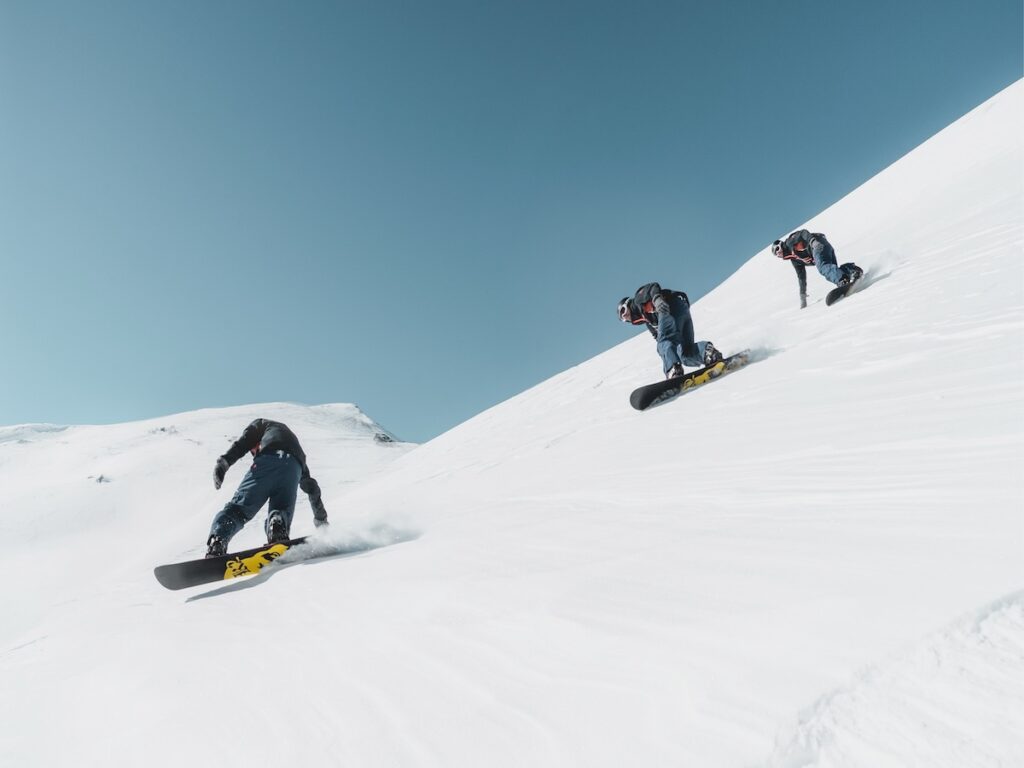
Final Thoughts On How To Break In Snowboard Boots
Getting your snowboard boots just the way you like is unique to you, and it might involve some experimenting.
Take your time, wear your boots regularly, and test out the various tips shared to guarantee a comfortable yet snug fit and fun time when you hit the slopes.